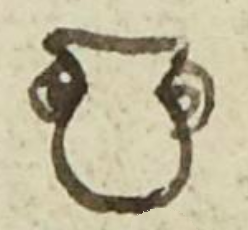Xoctepi (MH622r)
This compound glyph for the personal name Xoctepi (or Xoctepih, "Little Jug"), attested here as male, shows a small ceramic pitcher, pot, or jug (xoctli). We are considering the small size (-tepiton or -tepito) as coming into play as a visual diminutive and contributing to the compound hieroglyph as -tepi. It could be that this small jug is a reference to the body of the boy when he was born (round bellied, perhaps). If so, then the glyph is not literal, but phonetic.
Stephanie Wood
Across multiple manuscripts, a much more common word for a ceramic jug is comitl, especially given its role in standing for the phonetic syllable, -co. The -tepi ending to this name appears to be an apocapated version of -tepito or -tepiton. Just -tepi can also refer to an older sister or a servant, but the diminutive seems to work better.
Stephanie Wood
Domingo
xoctepih
Domingo Xoctepi (or Xoctepih)
Stephanie Wood
1560
Jeff Haskett-Wood
pots, jugs, pitchers, ollas, jarras, small, pequeñas, pequeños, nombres de hombres

xoc(tli), jug, jar, pot, vessel, https://nahuatl.wired-humanities.org/content/xoctli
-tepiton, small, a little bit, https://nahuatl.wired-humanities.org/content/tepiton
-tepi, small or little, https://nahuatl.wired-humanities.org/content/tepi
Olla Pequeña
Stephanie Wood
Matrícula de Huexotzinco, folio 622r, World Digital Library, https://www.loc.gov/resource/gdcwdl.wdl_15282/?sp=326&st=image.
This manuscript is hosted by the Library of Congress and the World Digital Library; used here with the Creative Commons, “Attribution-NonCommercial-ShareAlike 3.0 License” (CC-BY-NC-SAq 3.0).







